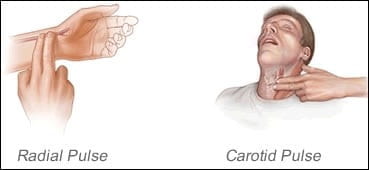As we learn in P.E it is important to get our Heart Muscle pumping and working throughout the day! On average children’s heart rates are higher than adults while resting, and can easily jet up into what we call the ‘Danger Zone.’ All grades are learning different information about our hearts and how we can be attentive to what feels healthy and what feels too intense.

Our older students learned there is a way to measure our heart rates and how to exercise in the Target Heart Rate Zone (Green Zone).
I like math, I want a challenge, how do we measure this?!
Typically for adults we say take 220 and subtract your age. That number is your personal Maximum Heart Rate. Coach Sadie is 28, so her Maximum Heart Rate is 220-28=192. However our students will likely have a higher heart rate during activity. To play it safe I like to tell students to take 200 and subtract their age, this will keep their target number slightly lower. I think this is important because children are still developing and learning how to exercise- when exercise is too strenuous it isn’t healthy, nor is it a pleasant experience.
Ok, Coach Sadie I have my Maximum Heart Rate (Red Zone), now what?
NOW we look at percentages! If I want to work really hard I will try to get my heart to work at 75 percent of my maximum heart rate. To measure this, I will take the percentage I want to work and make it a decimal. Then I multiply that decimal by my Maximum Heart Rate, it looks like this-
__192 __ X _____.75_____= _144
(Max Heart Rate Times Percentage of how I want to work equals my Target Heart Rate.)
This becomes my Target Heart Rate! (Green Zone)
How do I know if I am progressing or working?!
For this we need to measure our Resting Heart Rate- how many beats is our heart beating in one minute without doing any exercise?
Remember do not use your thumb to feel for a beat, it has its own! Do not put your hand on your chest because your heart muscle has different beat patterns and we want to focus on the one that goes to the rest of our body.
We can find this on our wrist by tracing our pointer and middle finger down our thumb to our wrist, this is called our radial pulse.
If you can’t find this one, you can place those two fingers on your jaw bone and travel down your neck to your carotid artery.
Don’t push too hard!

*Image from Firstaidforfree.com*
FOUND IT! Now what?!
Get a timer, OR a clock with a seconds hand, and watch it for 15 seconds. Don’t forget the number you counted because there is MORE MATH!
______________ X __4__ = _____________
Heartbeats Times Four Beats Per Minute
This is how we find our resting heart rate and then how we find out if we made it to our target heart rate!!
The American Heart Association recommends that children ages 6-17 get 60 minutes of moderate to rigorous physical activity PER DAY. This can be achieved through aerobic activities like running, riding bikes, skateboarding, scootering, gymnastics, dance, or swimming. The American Heart Association also recommends children ages 6-17 to do weight bearing activities at least 3 times per week, and vigorous activity 3 times a week as well. Weight bearing activities for kids may include playing at a playground with monkey bars, climbing ladders, rock climbing, gymnastics, martial arts etc. Vigorous activities may be activities they use for aerobic strengthening but may work harder usually indicated by sweating or getting hot.
Ages 3-5 are also included in American Heart Association with a recommended 3 hours of active play throughout the day.